Native Plants
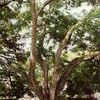
|
Common Name: Butternut
The Butternut, also called the White Walnut, is a native member of the Walnut family that grows throughout the eastern U.S. This slow-growing tree takes its name from the hard, egg-sized, greenish-yellow nuts it produces every fall, a prized food of ...
[ More Info ] [ Add to Shopping List ]
|
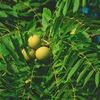
|
Common Name: Black Walnut
Black Walnut, a rapidly growing native tree, is common throughout the Midwest especially in moist bottomlands and open fields. Its beautiful, fine-grained, chocolate-brown heartwood is the ultimate choice for making solid wood furniture, interior tri...
[ More Info ] [ Add to Shopping List ]
|
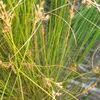
|
Common Name: Dudley's Rush
This native rush is closely related to Path Rush. Its flowers bloom from June to September.
This plant is a survivor. It tolerates loamy to clay soils and can grow in sun to semi-shade. It requires moist or wet soil....
[ More Info ] [ Add to Shopping List ]
|
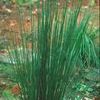
|
Common Name: Soft Rush
This species occurs in wet soils along stream edges, sloughs, ponds, lakes and in bottomland forests. It is also found in mesic upland prairies, wet pastures and ditches. This common species is easy to identify becasue of its inflorescence, which see...
[ More Info ] [ Add to Shopping List ]
|
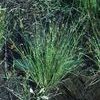
|
Common Name: Path Rush
Path rush is found in a wide variety of weedy locations such as in parking lots, fields, woods, swamps and along roadsides and paths. Medium green leaves turn brown with frost. Insignificant, tiny flowers are clustered at or near the stem tips....
[ More Info ] [ Add to Shopping List ]
|
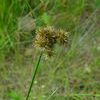
|
Common Name: Torrey's Rush
The plant is one of the easier rush species to identify because of its globular flower clusters and rhizomes which have tuberous enlargements. The plant flowers from July through October and is found on wet, sandy ground, on muddy shores of ponds and...
[ More Info ] [ Add to Shopping List ]
|
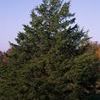
|
Common Name: Eastern Red Cedar
This upright evergreen is usually densely pyramidal when young but becomes more pendulous with age. Its scale-like leaves have a distinct fragrance when crushed. In late summer, small, blue, 1/8" across berry-like cones form that are enjoyed by bird...
[ More Info ] [ Add to Shopping List ]
|
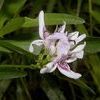
|
Common Name: Water Willow
The common native plant forms large mats or colonies on the shoreline of lakes, ponds and streams. Although the orchid-like flowers have a tremendous amount of purplish tint, they still look whitish from a distance. This species is found along the ba...
[ More Info ] [ Add to Shopping List ]
|
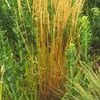
|
Common Name: June Grass
June Grass has pale green-silvery colored flowers which bloom from May to July and look like long, fuzzy spikes. Its lower stems are covered with small hair. The stem is hollow at the bottom of the plant. June Grass is a long-lived, cool season grass...
[ More Info ] [ Add to Shopping List ]
|
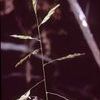
|
Common Name: Rice Cutgrass
Rice Cutgrass is a creeping perennial with flat, pale yellowish-green leaves that have rough edges. Its inflorescence is usually enclosed within a cowl-like sheath at first, and the branches when they emerge are wavy. This species flowers from August...
[ More Info ] [ Add to Shopping List ]
|
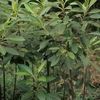
|
Common Name: Corkwood
This rare shrub is found in the boot heel of Missouri. In early spring, showy catkins appear followed by simple, thick, dark, shiny-green leaves with heavy vein patterns. The common name comes from its extremely light wood. The bark is showy with l...
[ More Info ] [ Add to Shopping List ]
|
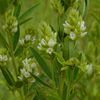
|
Common Name: Roundhead Lespedeza
Roundhead Lespedeza is a perennial native species of bush clover that grows on stiff upright stems. It is commonly found in upland woods, thickets and prairies, on glades and along streams, railroads and roadsides. Tiny creamy white, pea-like flowers...
[ More Info ] [ Add to Shopping List ]
|
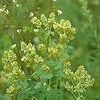
|
Common Name: Hairy Lespedeza
Long-lived perennial has distinctive upright stems with 3-parted round leaves. Leaves fold in the evening. Small white flowers bloom from July to October. The round seed heads are a deep, reddish brown and persist through winter providing a good food...
[ More Info ] [ Add to Shopping List ]
|
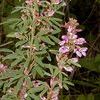
|
Common Name: Slender Lespedeza
A tall, usually erect, heavily branched plant. Pealike, pink to pink-purple flowers bloom July to September. Flowers crowded close to the smooth stem in the upper leaf axils. Leaflets are small, elongate, with three leaves crowded close to the stem. ...
[ More Info ] [ Add to Shopping List ]
|
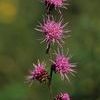
|
Common Name: Rough Blazing Star
In September, tall stalks of rounded, fluffy, rosy purple flowers bloom with most of the flowers opening at the same time making for a fine cut flower. Butterflies enjoy the nectar. This is one of the last Liatris to bloom and one of the shortest....
[ More Info ] [ Add to Shopping List ]
|
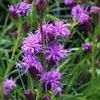
|
Common Name: Ontario Blazing Star
This blazing star is an upright, clump-forming perennial that grows to 2' tall. It typically occurs in rocky areas, glades and prairies. Fluffy, rose purple flower heads, each about 1 1/4 inch long, bloom in late summer. The blooms appear solitary o...
[ More Info ] [ Add to Shopping List ]
|
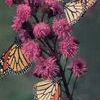
|
Common Name: Meadow Blazing Star
The crimson-red buds of this most unusual blazingstar burst open to reveal brilliant purple/pink flowers in August and September. Unlike the characteristic single flower spike of most blazingstars, Meadow Blazingstar is widely branched, and numerous ...
[ More Info ] [ Add to Shopping List ]
|
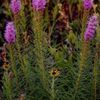
|
Common Name: Bottlebrush Blazing Star
Bottlebrush Blazing Star produces many, tightly clustered, 1/2 inch rosy-purple flower heads leafy wand-like spikes growing up to 2 1/2 feet tall. The narrow leaves are less than 1/4 inch wide and up to 6 inches long, giving the plant one of its com...
[ More Info ] [ Add to Shopping List ]
|
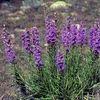
|
Common Name: Dotted Blazing Star
Native to the western short grass prairies of the Great Plains and foothills of CO and NM, Liatris punctata is the most xeric of our blazing stars. Deep rooted and long lived, this species is the best choice for xeriscapes where it can be planted for...
[ More Info ] [ Add to Shopping List ]
|
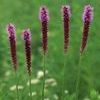
|
Common Name: Prairie Blazing Star
In July and August, unbranched stalks bear dense spikes of magenta flowers on strong stems. The flowers, which are nectar rich, are a favorite of hummingbirds and butterflies while songbirds enjoy the seeds. Stunning in the landscape or in cut flowe...
[ More Info ] [ Add to Shopping List ]
|
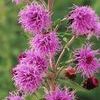
|
Common Name: Eastern Blazing Star
Eastern Blazing Star has violet to rosy purple flowers on tall spikes which bloom from the top downward. It is excellent for cut flower arrangements. This hardy and easy to cultivate flower grows well in lean to moderately fertile soil with good drai...
[ More Info ] [ Add to Shopping List ]
|
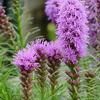
|
Common Name: Marsh Blazing Star
This blazing star is similar in its flowering appearance to Prairie Blazing Star (L. pycnostachya) except it has smooth stems and the flower heads are more rounded. Blooms midsummer to early fall in mesic to wet prairies. A good choice for rain garde...
[ More Info ] [ Add to Shopping List ]
|
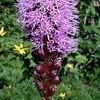
|
Common Name: Blazing Star
This blazing star cultivar is a small, compact, upright, clump-forming perennial. Plants have terminal spikes of fluffy, deep purple flower heads atop erect, leafy flower stalks. Multiple stalks arise from basal tufts of narrow leaves. Flowers gener...
[ More Info ] [ Add to Shopping List ]
|
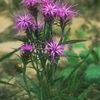
|
Common Name: Scaly Blazing Star
Growing no taller than knee-high, this unique blazing star produces a striking mound of brilliant pink flowers in late summer. This is a great choice for hot, dry situations where low-growing plants are desired. A very drought tolerant wildflower fo...
[ More Info ] [ Add to Shopping List ]
|
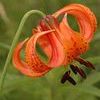
|
Common Name: Michigan Lily
The Michigan lily is the common orange lily of marshlands and ditch banks. It blooms in mid July. It is easily grown in average to medium wet, well-drained soils in full sun to light shade. Naturally occurs in wet meadows, low woods and swampy prairi...
[ More Info ] [ Add to Shopping List ]
|
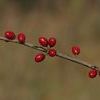
|
Common Name: Spicebush
This 2005 Missouri Botanical Garden Plants of Merit winner is a broad, rounded multi-stemmed shrub covered with fragrant, yellow-green flowers in March and April. In fall, the aromatic light green leaves turn a deep yellow-gold while birds feed on t...
[ More Info ] [ Add to Shopping List ]
|
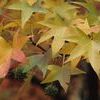
|
Common Name: Sweetgum
The deep green, glossy, star-shaped leaves turn a wonderful medley of colors in fall ranging from orange to purple to red on a single tree. In the fall, golf-ball size brown fruit with sharp points form....
[ More Info ] [ Add to Shopping List ]
|
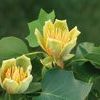
|
Common Name: Tulip Poplar
This stately tree is fast growing and can grow very large. The tree has a pyramidal shape when young and becomes rounded when mature. The leaves are bright green in summer but turn a golden yellow in fall. In the summer, the tree blooms with yellow...
[ More Info ] [ Add to Shopping List ]
|
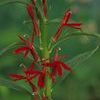
|
Common Name: Cardinal Flower
A Plant of Merit winner, this striking plant bears dozens of brilliant red flowers on strong, upright stems in late summer. Hummingbirds enjoy the nectar. Naturally found along streams, this plant is a great choice for rain gardens and pond edges....
[ More Info ] [ Add to Shopping List ]
|
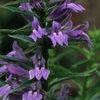
|
Common Name: Blue Lobelia
In September and October stout spikes of two-lipped flowers bloom. In optimum growing conditions it may self-seed forming attractive colonies....
[ More Info ] [ Add to Shopping List ]
|
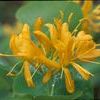
|
Common Name: Yellow Honeysuckle
In spring, this twining, deciduous woody vine blooms with tubular yellow flowers in whorls at the end of stems. Butterflies and hummingbirds are drawn to the blossoms for the nectar. In late summer, round, fleshy, orange to red berries appear, which...
[ More Info ] [ Add to Shopping List ]
|
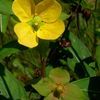
|
Common Name: Bushy Seedbox
This interesting plant produces numerous showy yellow flowers from the leaf axils. The four-petaled flower is typical of the evening primrose family. The yellow flower petals fall off easily when touched. The plants common names comes from its cube-s...
[ More Info ] [ Add to Shopping List ]
|
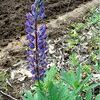
|
Common Name: Wild Lupine
Classic meadow wildflower. Blue flower stalks atop stiff stalks. Loves loose soil, but will grow even in clay in time. Blooms early, along with daisies. Perennial....
[ More Info ] [ Add to Shopping List ]
|
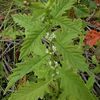
|
Common Name: Common Water Horehound
Common Water Horehound is in the mint family, but it does not have aromatic leaves. The large, rounded teeth on the leaves distinguish this plant from other species in the genus Lycopus. Small, white flowers bloom in the leaf axils from July to Septe...
[ More Info ] [ Add to Shopping List ]
|
